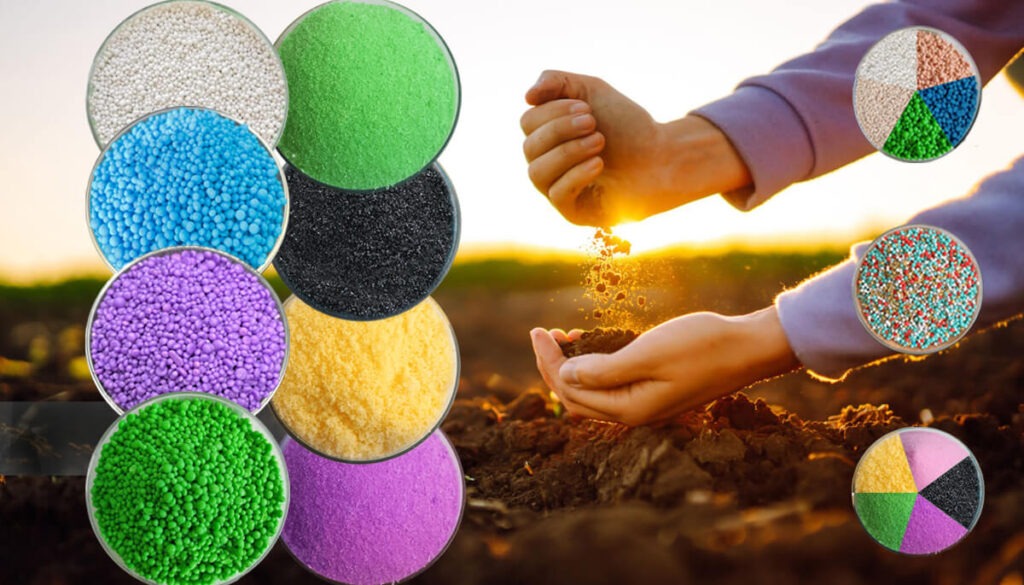Let more growers get greater benefits
The Best NPK Fertilizer For Your Crops
- Industry News
- November 29, 2017
- 10:52 am

Selecting the best NPK fertilizer is crucial for maximizing crop yields and ensuring optimal plant health. Because there are so many different types of NPK Fertilizers and the fact that NPK formulas are more, choosing the ideal fertilizer for your crop type and soil conditions can be challenging. This guide covers the top NPK fertilizers for different crop needs and provides tips on how to choose the best fertilizer for the best results.
List of Contents
- Understanding NPK Ratios and Their Importance
- Best NPK Fertilizers for Vegetables
- Ideal NPK Fertilizers for Fruit Trees and Berries
- Best NPK Fertilizers for Lawns and Turf Grass
- Best NPK Fertilizers for Flowering Plants and Ornamental Gardens
- How to Choose the Right NPK Fertilizer for Your Crops
- Environmental Considerations When Using NPK Fertilizers
- Conclusion
Understanding NPK Ratios and Their Importance

Each element in an NPK fertilizer serves a unique purpose:
- Nitrogen (N): Essential for leafy, vegetative growth. It boosts chlorophyll production and helps plants grow faster and more vigorously.
- Phosphorus (P): Important for root development, flower formation, and fruit production. It enhances energy transfer within plants, which is crucial for growth and reproduction.
- Potassium (K): Supports overall plant health, water regulation, and disease resistance. Potassium is also vital for fruit quality and shelf life.
Choosing the right NPK ratio depends on crop type, growth stage, and soil conditions.
1. Best NPK Fertilizers for Vegetables
Vegetables generally benefit from a well-balanced NPK ratio, but specific ratios can vary based on the crop type.
- 10-10-10 Fertilizer: This all-purpose, balanced ratio is ideal for leafy greens, tomatoes, and other vegetables that require uniform growth. It promotes strong foliage, root health, and yield without over-focusing on one growth aspect.
- 15-15-15 or 16-16-16 Fertilizer: A slightly higher balanced ratio, providing additional nutrients for heavier-feeding vegetables like tomatoes, peppers, and squash.
- 5-10-10 Fertilizer: Higher in phosphorus and potassium, this option is perfect for root vegetables like carrots, potatoes, and beets. It promotes strong root development and can improve the flavor and size of underground crops.
Tip: Test your soil to determine specific nutrient needs, as some vegetable gardens may need a customized blend to address nutrient deficiencies.
2. Ideal NPK Fertilizers for Fruit Trees and Berries
Fruit trees and berries have unique nutrient demands, particularly during flowering and fruiting stages.
- 9-9-9 Fertilizer: This ratio provides a balanced supply for both root development and fruit quality, making it ideal for citrus trees, apples, and stone fruits.
- 4-6-8 or 5-10-10 Fertilizer: Higher phosphorus and potassium ratios work well for berry plants, such as strawberries, blueberries, and raspberries. These ratios encourage strong root systems and increase fruit production.
- 12-4-8 Fertilizer: This higher-nitrogen blend is suitable for young fruit trees during their early growth stages, promoting healthy foliage development before fruiting begins.
Tip: Apply these fertilizers in early spring to support flowering, and avoid high-nitrogen fertilizers in late summer to prepare trees for dormancy.
3. Best NPK Fertilizers for Lawns and Turf Grass
For lawns, nitrogen is the most critical nutrient for lush, green growth. The right NPK fertilizer can help maintain a dense, vibrant lawn.
- 20-5-5 Fertilizer: With a high nitrogen content, this ratio is ideal for promoting quick growth and enhancing lawn color and thickness.
- 30-5-5 Fertilizer: Commonly used in early spring, this high-nitrogen formula jumpstarts grass growth after winter dormancy.
- 12-6-22 Fertilizer: Ideal for fall applications, this ratio reduces nitrogen to prevent excessive growth and instead focuses on potassium to strengthen roots in preparation for winter.
Tip: Apply lawn fertilizers in the early morning or late afternoon to prevent nutrient evaporation and maximize absorption.
4. Best NPK Fertilizers for Flowering Plants and Ornamental Gardens
Flowering plants and ornamental shrubs benefit from fertilizers with higher phosphorus content to enhance blooming.
- 10-30-20 Fertilizer: This high-phosphorus ratio is suitable for flower beds, roses, and flowering shrubs. It encourages vibrant blooms and healthy root systems.
- 12-36-12 Fertilizer: Another effective bloom booster, this ratio promotes bud formation and can extend flowering periods, making it ideal for perennials and flowering annuals.
- 5-10-10 Fertilizer: This low-nitrogen option is excellent for delicate ornamentals, avoiding excessive foliage growth while encouraging beautiful, long-lasting blooms.
Tip: Apply bloom-boosting fertilizers at the start of the flowering season to get the best results.
How to Choose the Right NPK Fertilizer for Your Crops

Here are some key factors to keep in mind:
- Soil Testing: Conduct a soil test to determine nutrient levels. This will help you identify any deficiencies and choose an NPK fertilizer that meets those specific needs.
- Growth Stage: Different growth stages require varying NPK ratios. Early growth stages benefit from higher nitrogen, while flowering and fruiting stages need more phosphorus and potassium.
- Crop-Specific Needs: Certain crops, like tomatoes and citrus trees, may require specialized ratios. Be sure to check your crop’s nutrient requirements before selecting an NPK fertilizer.
- Release Type: Consider using a slow-release or coated fertilizer, which provides a steady nutrient supply and minimizes nutrient loss due to leaching. This can be especially beneficial for long-season crops or areas with heavy rainfall.
Environmental Considerations When Using NPK Fertilizers
NPK fertilizers have numerous benefits, but overuse can lead to environmental issues, such as nutrient runoff and water pollution. To minimize environmental impact:
- Apply Fertilizer Carefully: Use the recommended dosage and avoid applying fertilizer before heavy rains to reduce the risk of leaching.
- Consider Organic Options: Organic fertilizers provide essential nutrients while supporting soil health and reducing the risk of pollution. These can include composted manure or bone meal, which offers natural sources of nitrogen, phosphorus, and potassium.
- Use Precision Application Tools: Fertilizer spreaders or injectors can help ensure even distribution, preventing nutrient buildup and reducing waste.
Conclusion
Selecting the best NPK fertilizer for your crops involves understanding your soil’s needs, your plants’ growth stages, and each nutrient’s role. By choosing an appropriate NPK ratio and applying it responsibly, you can maximize crop yields, promote healthy plant growth, and protect your soil and surrounding environment. Remember, a balanced approach to fertilization will contribute to both immediate crop success and long-term agricultural sustainability.
NPK Related Products
If you want to know other questions about NPK fertilizers, please contact us and we will provide professional answers.
- Article
What will you get when touch?
✔ Quick & helpful reply within 6 hours.
✔ Tailored solutions for your project.
✔ One-stop product, tech, market
TRENDING
TAIAN RISSO CHEMICAL FERTILIZER CO.,LTD
- Address: High-tech Development Zone, Taian City, Shandong Province
© Copyright 2017 RISSO CHEMICAL. All Rights Reserved.











